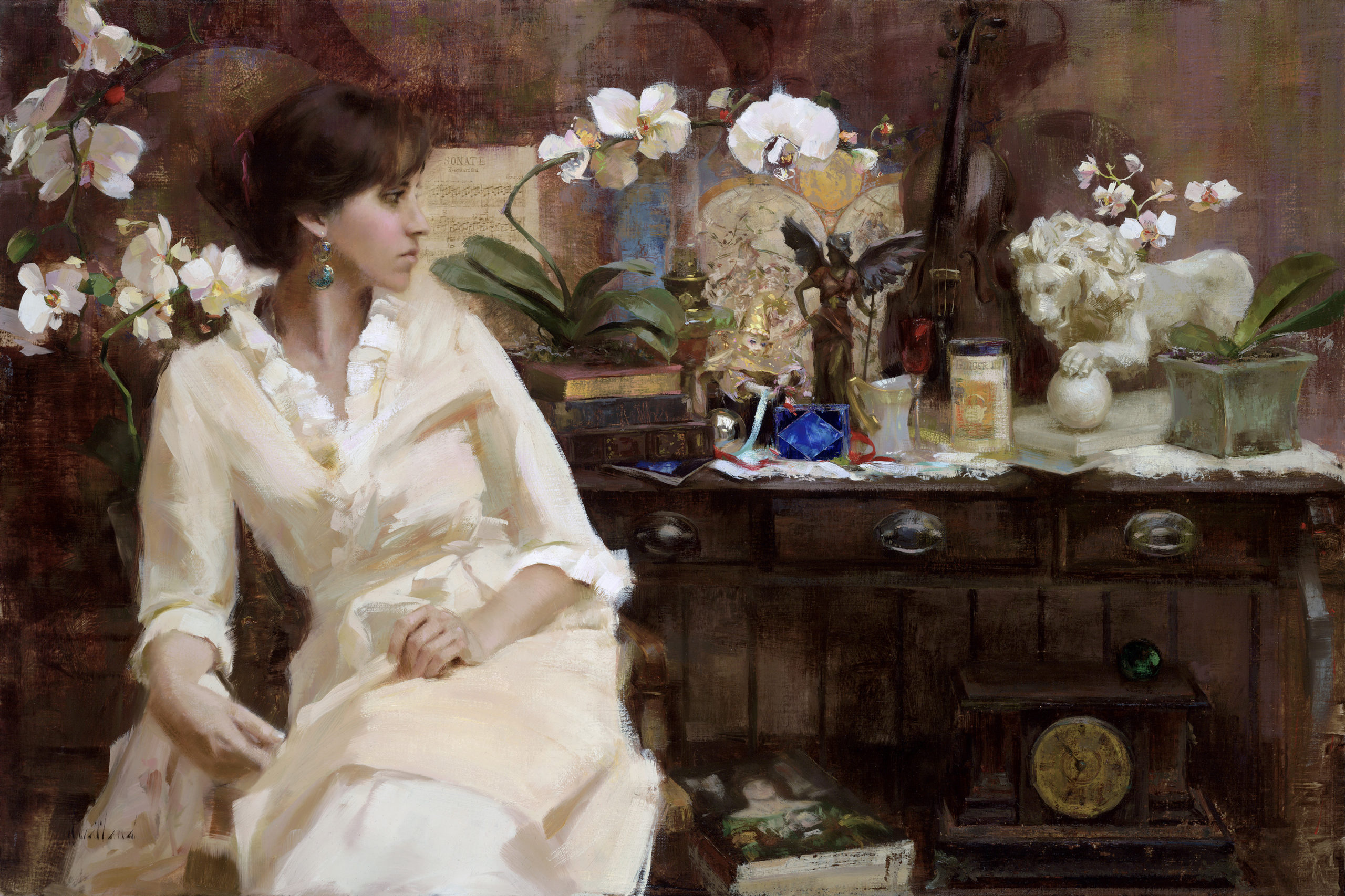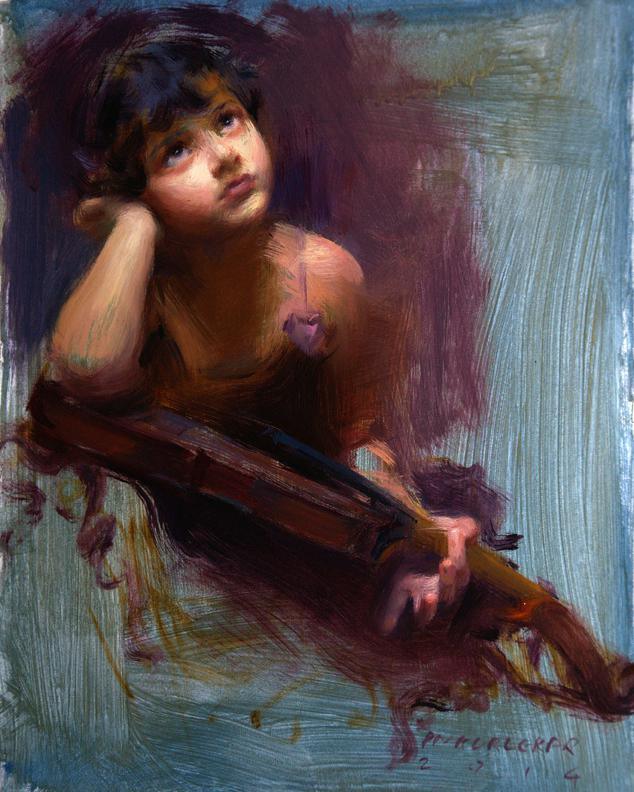Discovering Iconic Artists and Their Influences on Figurative Oil Painting
Discovering Iconic Artists and Their Influences on Figurative Oil Painting
Blog Article
Understanding the Art of Figurative Oil Paint: Necessary Tips and Techniques for Aspiring Artists
Figurative oil paint represents an intricate intersection of strategy and interpretation, demanding a comprehensive understanding of human composition, composition, and shade theory. Hopeful artists should not just grasp the subtleties of form and activity yet also think about exactly how compositional techniques can magnify emotional vibration. Additionally, an exploration of color consistency and texture techniques can significantly improve the aesthetic impact of their job. As artists development in their journey, the concern occurs: exactly how can one grow an unique design while mastering these fundamental aspects? The succeeding expedition of these essential facets promises to light up the path forward.

Comprehending Human Makeup
Comprehending human composition is fundamental for any artist desiring grasp figurative oil painting. A comprehensive understanding of the human kind makes it possible for musicians to create lifelike depictions that resonate with customers. Understanding of physiological structures, such as muscle mass, bones, and joints, gives necessary understanding into exactly how the body relocations and positions.
Artists must acquaint themselves with the proportions of the human number, consisting of the partnership in between different body components and exactly how these percentages differ across ages and genders. This awareness permits precise scaling and point of view in their work. Furthermore, recognizing the underlying musculature enhances the ability to illustrate activity and tension in a number, leading to a more engaging and dynamic make-up.
Researching composition also aids in determining subtle subtleties in position and expression, which are crucial for conveying emotion and narrative within a painting. Resources such as anatomical textbooks, life drawing sessions, and on-line tutorials can be important tools for musicians looking for to strengthen their anatomical expertise. Ultimately, mastering human makeup not just improves technical skill but also enhances a musician's imaginative vision, enabling them to bring their metaphorical oil paintings to life with authenticity and deepness.
Relevance of Structure

Trick principles of composition consist of balance, unity, and focal points. Accomplishing equilibrium ensures that no single element bewilders the others, while unity creates a sense of consistency throughout the item. Focal factors attract attention to considerable elements of the artwork, allowing customers to involve with the story or motif a lot more deeply.
Furthermore, using leading lines and the regulation of thirds can substantially improve structure. Leading lines naturally lead the audience's gaze via the painting, while the guideline of thirds gives a framework for positioning crucial elements in a visually enticing manner. By grasping make-up, aspiring musicians can boost their figurative oil paints, changing them into engaging aesthetic tales that reverberate with their audience.
Mastering Color Concept
Color concept offers as a basic facet of figurative oil painting that complements the principles of structure. Understanding the color wheel, which includes primary, additional, and tertiary colors, is vital for creating unified schemes and efficient aesthetic narratives.
Key ideas such as color, worth, and saturation play a vital duty in determining the mood and influence of a painting. Artists need to discover warm and cool shades to evoke specific feelings; warm shades typically communicate power and interest, while awesome shades can impart calmness and harmony.
The connection in between complementary colors-- those opposite each other find out here on the color wheel-- can create striking contrasts and vibrant make-ups. When compared, these colors enhance each various other's have a peek here vibrancy, attracting the audience's eye and adding depth to the art work.
Moreover, comprehending analogous colors allows artists to accomplish a feeling of unity and coherence. By picking colors that are adjacent on the wheel, one can maintain a well balanced atmosphere throughout the piece.
Eventually, understanding shade theory outfits aiming musicians with the devices required to control color intentionally, boosting their ability to convey feeling and narrative via metaphorical oil painting. figurative oil painting.
Techniques for Structure
A range of methods can successfully create texture in figurative oil paint, including deepness and measurement to the art work. One essential strategy is making use of impasto, where thick layers of paint are related to the canvas, permitting a three-dimensional high quality. This strategy improves light communication, producing dynamic aesthetic interest.
An additional technique is scumbling, which includes using a slim layer of pop over here lighter paint over a dried darker layer. This method enables the underlying color to show with, leading to a soft, distinctive impact that can stimulate a sense of environment or age. Dry cleaning is also necessary; using a dry brush with very little paint, artists can develop fine lines and fragile structures, excellent for recording the nuances of skin or material.
Furthermore, combination knives can be used to scuff or use paint, generating special patterns and appearances. Try out different tools and materials, such as sponges or rags, can even more enhance the textural top quality of a paint. Inevitably, understanding these strategies calls for technique and trial and error, allowing artists to discover the diverse tactile high qualities that can raise their figurative works.
Developing Your One-of-a-kind Style
An artist's distinct design is frequently the conclusion of individual experiences, influences, and strategies developed gradually. Establishing this originality in figurative oil paint needs an aware effort to check out both your inner self and the broader artistic landscape. Begin by mirroring on the motifs and subjects that reverberate with you mentally; your interest will certainly instill credibility right into your job.
Study numerous designs and activities, yet rather than mimicing, remove components that talk to you - figurative oil painting. Trying out various methods, shade palettes, and structures, enabling yourself the liberty to play without the pressure of excellence. Keep a sketchbook or journal to record your thoughts, ideas, and creative development; this will certainly function as an important resource for determining reoccuring preferences and themes
Look for useful comments from mentors or peers, as they can offer insights that light up elements of your job you might ignore. Attend workshops and exhibits, submersing on your own in the art community to more fine-tune your viewpoint. Lastly, be client with yourself; the journey of developing an one-of-a-kind design is continuous, evolving with each brushstroke and every canvas you come across. Welcome the process as long as the result, and your distinct voice will emerge.

Final Thought
Understanding metaphorical oil paint necessitates a detailed understanding of human makeup, make-up, and color concept. Embracing these fundamental principles will substantially benefit aiming artists on their imaginative journey.
Figurative oil painting stands for an intricate junction of technique and analysis, requiring a comprehensive comprehension of human composition, make-up, and color theory. An exploration of shade consistency and texture techniques can substantially boost the aesthetic effect of their work. By understanding structure, aiming artists can raise their figurative oil paintings, transforming them right into compelling visual tales that resonate with their audience.
Experiment with various methods, shade schemes, and make-ups, permitting on your own the freedom to play without the stress of excellence.Grasping figurative oil painting requires a thorough grasp of human makeup, composition, and shade theory.
Report this page